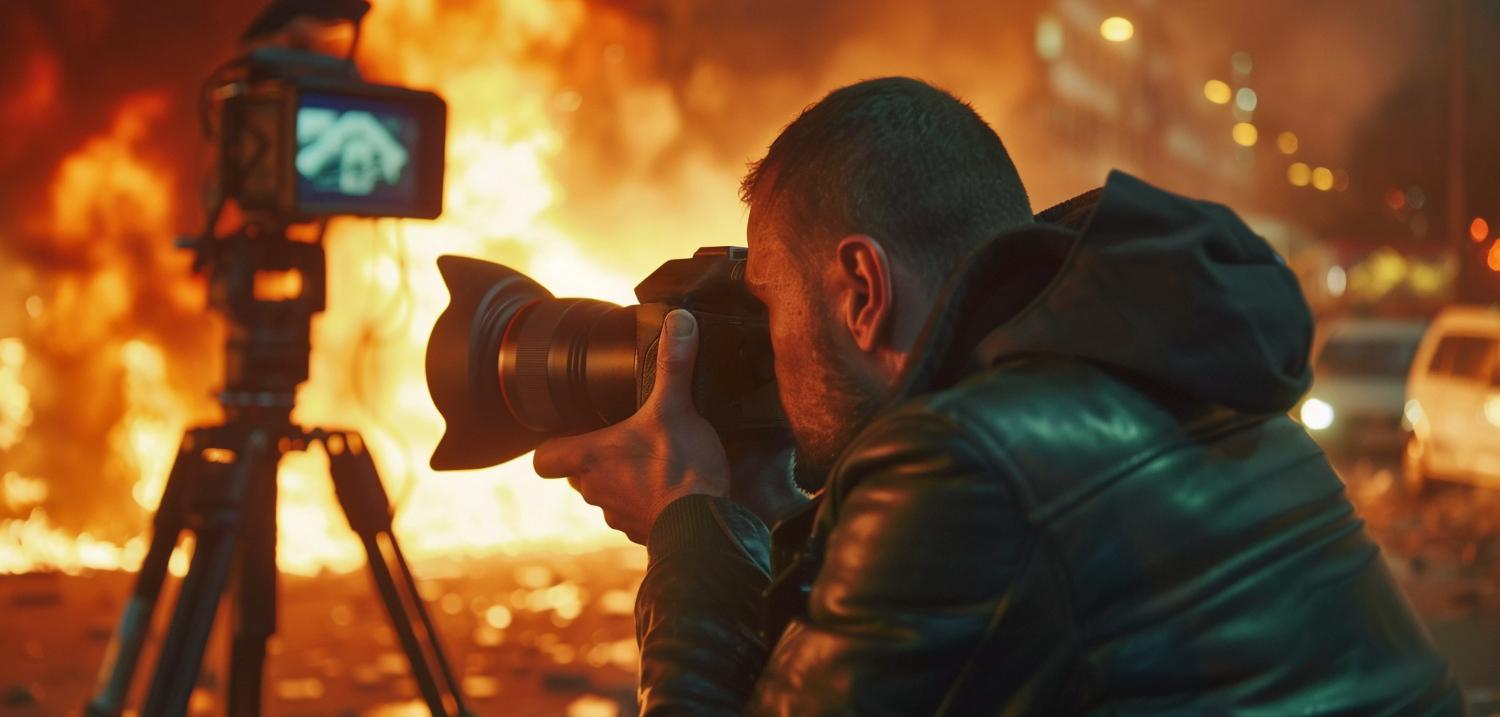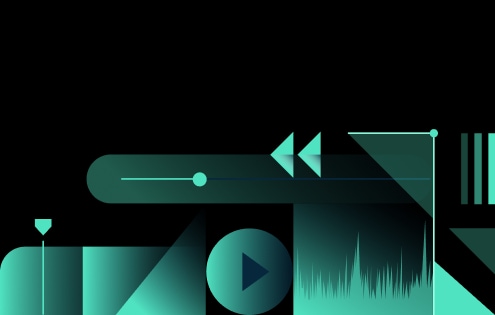In this article
Understanding Camera Movement
Did you ever feel like you're on a roller coaster when you go to watch a movie at the cinema? You are sitting in a comfy chair, and the action on the screen is taking you to impossible lands through treacherous landscapes, and you witness an entire life story unfold before your eyes, yet you are sitting still in one place. That's the magic of camera movement. It can make us feel like we are on an emotional ride, living the story with the characters.
Camera movement is such a broad topic because there are many different types, styles, angles, etc. In this ultimate guide, we will try to explain as much of it as possible.

Camera movement refers to the pre-planned movement of the camera apparatus during a particular sequence. This can be used to follow a certain action, reveal information, or create an effect. You can move the camera in two different ways. You can use dollies or cranes, hold the camera in your hand to physically move it through space, or go for mechanical movements where the camera is fixed in one location, but you can pan, tilt, zoom, etc.
Why is Camera Movement Important in Visual Storytelling?
As a creator, you have many options when it comes to telling a story on screen. But before we discuss the different types of camera movement and what they mean, let's consider the most important aspects of camera movement in film and TV.
The Nine Basic Types of Camera Movement
Here are the types of camera movements. Let's see each one by one.
Pan
A pan is a type of camera movement that features a fixed camera position, with the camera panning to the left or right. So, in essence, we have horizontal movement from a fixed position. This type of shot is used for several reasons, the most common of which are to reveal a landscape, follow or reveal a particular action, and build suspense. The example above comes from a 2007 comedy directed by Wes Anderson titled The Darjeeling Limited.
Tilt
The tilt shot is a close cousin to the pan shot. It features the same setup, where the camera is fixed, but instead of going from left to right, it goes from top to bottom or vice versa. The tilt shot reveals tall structures and creates a sense of disorientation. The example above comes from another Wes Anderson movie, but this one is way more popular. The Grand Budapest Hotel is one of the most artistic attempts to create a mainstream movie.
Dolly (Tracking In/Out)
The dolly shot features a camera apparatus fixed onto a rail, track, or something with wheels. The camera then moves closer or further away from the subject, which marks the difference between a tracking in and tracking out shot. This type of movement is used to add emotional emphasis, build intimacy, and make dramatic reveals. The example above comes from the 1927 silent movie classic Wings.
Tracking (Lateral Movement)
While the dolly shot doesn't necessarily need to track the subject, the tracking shot (as the name suggests) does. This type of shot follows the subject moving from side to side, forward, or backward. It is, therefore, most commonly used to follow the character's motion and movement through the scene, creating and establishing the visual flow of the story. The example above from Hugo (2011) combines several types of tracking shots.
Crane (Jib)
A crane shot features a literal crane. You attach the camera to it, giving you the option to zoom out and create wide shots or even extreme wide shots. This type of camera movement is very effective when creating dynamic establishing shots for the first scene in a sequence and for dramatic exits. The example from the 1939 classic Gone With The Wind features a panning shot that turns into a crane wide shot while zooming out.
Handheld
A handheld shot is different from the five examples above. Here, the camera is not fixed but handled by a skilled camera operator who holds it in hand and records the scene. It features natural, shaky movement and is very commonly used to give off a sense of realism and urgency. It kind of makes you feel like you're watching a documentary, and there is no better example than this handheld shot from the 1998 blockbuster, Saving Private Ryan.
Steadicam / Gimbal
This type of shot combines the handheld shot with a panning or tilt shot by offering a stabilization apparatus that you attach to your camera to stop it from shaking. Therefore, it lets the camera operator track the subject smoothly. It is used to shoot fluid movement through space, letting the audience immerse themselves in the story. One of the best examples of a steadicam shot is this long take from Scorcesse's Goodfellas (1990).
Zoom
Zooming in and out with the lens is technically not a form of camera movement but rather a form of lens movement. The point of zooming in is to isolate subjects and add visual emphasis. When you combine zooming in with a dolly shot, you get a dolly zoom effect, just like in the example from the TV series Severance (2022).
Drone (Aerial Movement)
A done shot features a camera attached to a drone (a flying object). You can use it to shoot an overhead scene or to show expansive locations, and in some instances, you can use a drone to create indoor shots. Generally, this type of camera movement is used to show the epic scale of a vast location, the beauty of a particular geographical location, or for aerial transitions. The example clip shows several drone shots from the movie Red Notice (2021).
Creative Techniques to Combine With Camera Movement
Making a visual story, be it a short clip or a full-length movie, means that you need to learn about a lot more than just camera movement. There are many more creative techniques that you need to master in order to stand out from the crowd. We will mention three of them that pair well with camera movement.
How to Choose the Right Camera Movement?
Pro Tips for Executing Effective Camera Movement
Conclusion
We hope that this ultimate guide to camera movement helped you understand the different types, what emotions they entail, and how to use them in your own project. Speaking of using them, when you record a camera movement sequence, you need a powerful video editing tool that will help you stitch the footage together, remove unnecessary parts, adjust colors, correct scenes, and use AI to remove unwanted objects and clutter.
The best tool for this job is Filmora, which you can download to your Windows or Mac device today. It allows you to experience the joy of video editing with one of the most intuitive tools available.



